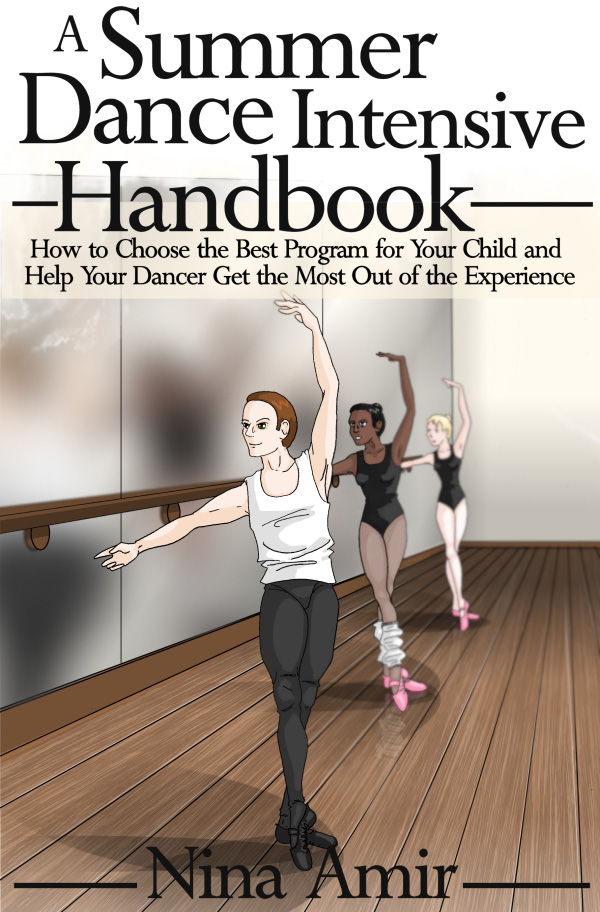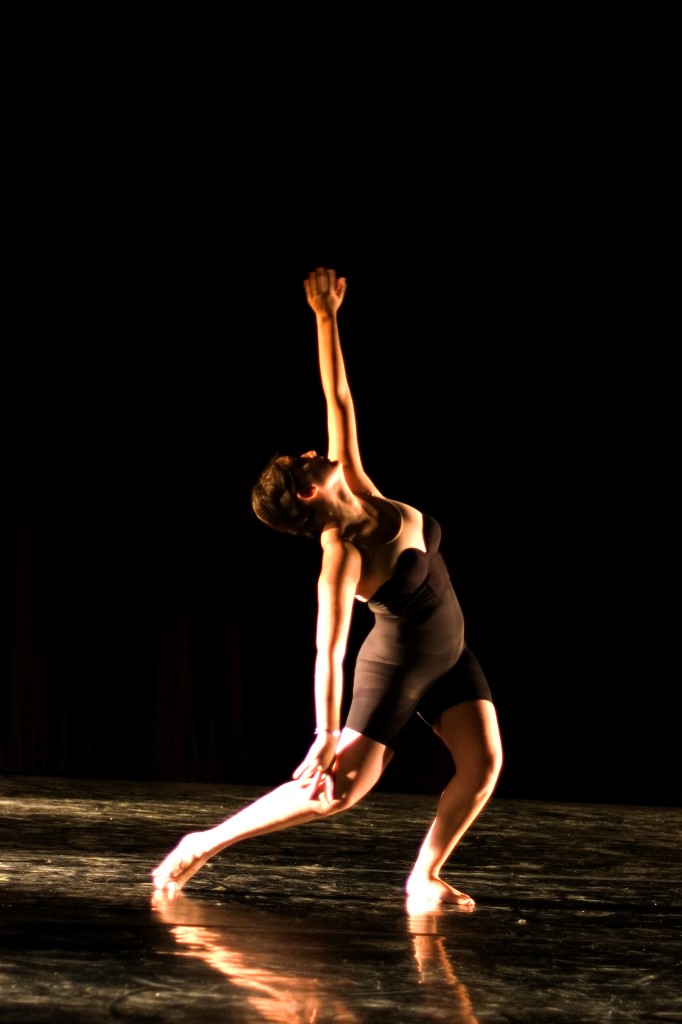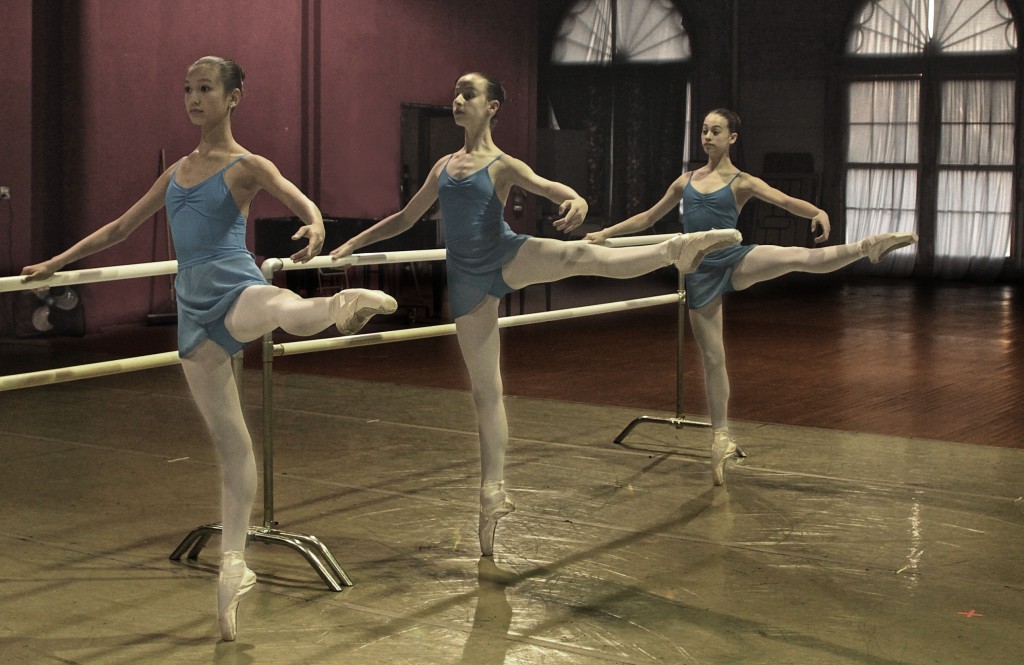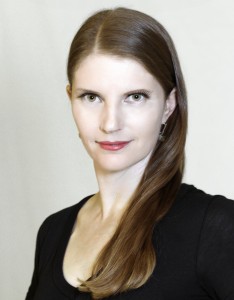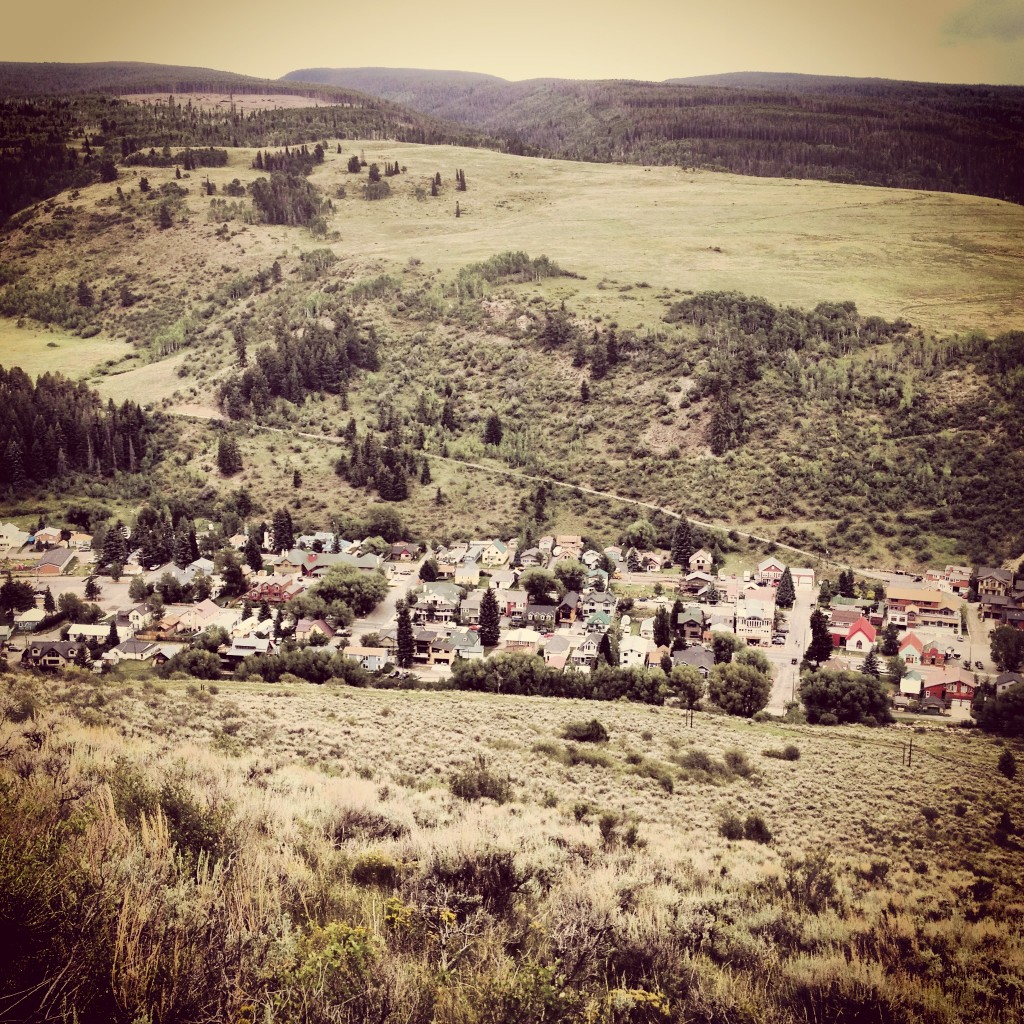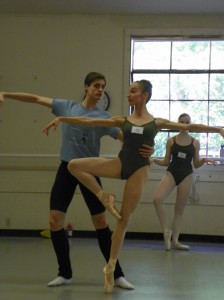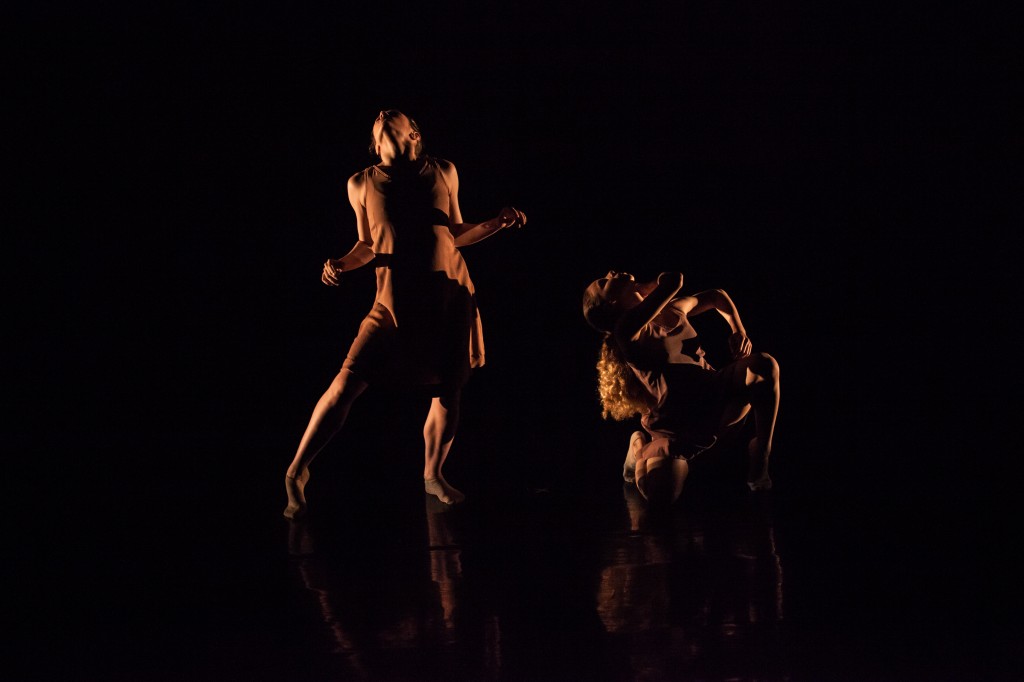
by Lissa Smith
The end of Hubbard Street 2’s 2012–13 season was jam-packed. We had two full weeks of danc(e)volve: New Works Festival at the Museum of Contemporary Art with my family visiting Chicago for the shows, then rehearsals and preparation for our Inside/Out Choreographic Workshop. I had a teaching schedule to prepare for the Hubbard Street Summer Intensive in Iowa City and summer plans to coordinate for my time off-contract. When the last danc(e)volve performance came to an end in mid-June, I said goodbye to my family, hopped in a cab, and headed back to my apartment to pack my bag for a flight to Iowa at 6:15 the next morning.
At the airport, I sat at the gate with a coffee in one hand and my iPad in the other. So many thoughts were racing through my mind, at such an early hour! Going away to a dance intensive is something I have done every summer since I was 12 years old, so the excitement and apprehension were familiar to me — only this time, I was nervously anticipating being on the faculty roster and calling roll. Every trip I took for summer study was a life-changing experience and so I wanted my students to leave Iowa at the end of the Intensive with new insights, magical memories and renewed passion for dance.
In my mind, I “ran through” choreography that I planned to teach. I was confident that the students would enjoy learning Hubbard Street repertory. I would work with them on Jacqueline Burnett’s and David Schultz’s solos from Recall by Robyn Mineko Williams; time permitting, I also hoped to teach a brief section from Strides by Norbert De La Cruz III, one of last year’s winners of our National Choreographic Competition.
I figured having the students learn selections from Recall and Strides would be great because of the works’ opposing qualities. Recall’s score is electronic, having almost a “club” kind of feel, while Strides is set to more dramatic orchestral music. Likewise, their movement proposes different ideas and has different “rules.” In Recall, there is room for individual interpretation and play, musically and physically; Strides has set musical counts for its choreography and requires its entire cast to dance as one, often in unison.
After arriving and checking into the hotel, I packed my dance bag and walked over to a studio at the University of Iowa, which hosted the program, for my first rehearsal with Summer Intensive students. I stopped in the doorway and thought, Here we grow! Little did I know how true these three words would ring through the following weeks.
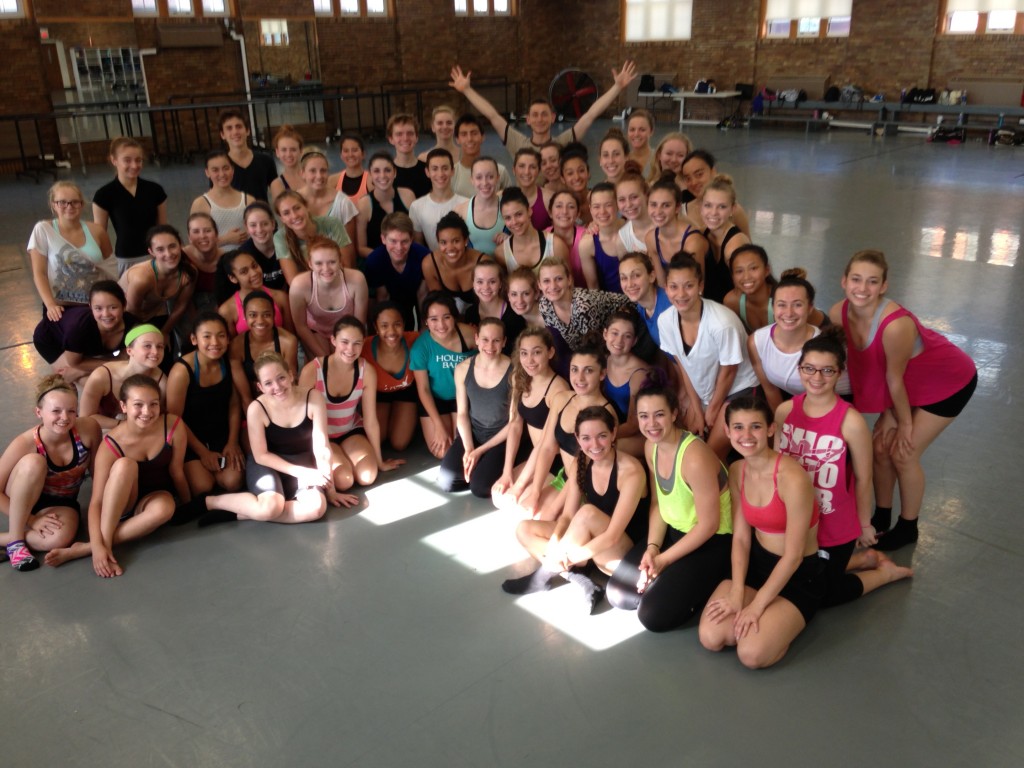
This year’s Hubbard Street Summer Intensive was divided into two sets of 14- to 17- year-old dancers, assigned to groups named Blue and Green. I took attendance and think I managed to mispronounce only about a quarter of their names — not too bad for day one.
We got right to work and all of the dancers were focused, hardworking, driven and open. Since auditions are required to attend our summer program, I was not at all surprised by the level of talent of the students, and I was so pleased with all that we accomplished in a single day. The hopes and goals the dancers brought with them seemed the same as the ones I had for myself: to have fun, be open, absorb, give and learn as much as I could — to grow in every way possible. Teaching passionate students is both a privilege and a pleasure! I felt so lucky to be able to guide the students during their first week in Iowa City, and looked forward to returning for their final week and showings at the end of the program, although I couldn’t have guessed just how fulfilling this would be on a personal level. Week one was over in seemingly no time at all. Once again I was packing a bag.
I traveled to Chicago to rehearse for Inside/Out and thought about my students often while back in Hubbard Street’s studios. The two performances of the choreographic workshop went great. Having the opportunity to work so closely with fellow company members on their own experiments in dance is a joy and refreshing. Once the performances concluded, I filled my suitcase again and headed back to Iowa City.
My task was to rehearse and “clean” the Recall choreography I’d taught for the showings as well work on the students’ modern technique demonstration. I was unprepared for the amount of growth that had occurred while I was away, and the level of intensity with which the students inhabited their material. The pride I felt for them was incredible — Maybe like what a parent feels for her child, I thought. They took ownership of all I had taught them, each dancer far surpassing all of my expectations, putting personal stamps on their progress for their friends and family members to see. I hope these dancers carry this culmination of joy and growth through their coming year of training, to next summer’s studies and beyond.
For me, the Summer Intensive embodies exactly what makes Hubbard Street Dance Chicago so special. Hubbard Street dancers are strong, diverse, unique — and always learning. Every moment in the studio and onstage is supercharged with passion and talent melded together and shining with individuality. We arrive at the studios each day ready to explore and grow. Our Summer Intensive students lived up to those high standards and embraced everything that they were taught; to those who are reading this, I say Thank you, and #dothelissa. I’ll explain: the hashtag came about in my rehearsals and as you can see in this panorama, became something of a sensation. Go ahead and put your foot in your hand, and #dothelissa yourself! I’ll keep an eye out for your photos.

Beginning August 26, Lissa Smith begins her third season with Hubbard Street 2, joining fellow returning members, promoted HS2 Apprentices Jules Joseph and Katie Kozul, and new dancers Andrea Thompson, Odbayar Batsuuri and Adrienne Lipson. Catch HS2 onstage this year in Chicago, New York City, Michigan, Pennsylvania and Virginia, plus Canada, Germany and additional locations. Visit hubbardstreetdance.com for a complete touring schedule, artist profiles and more.

Contributor Lissa Smith, age 21, was born and raised in Miami, Florida. She is currently dancing with Hubbard Street 2 of Hubbard Street Dance Chicago. She attended The Boston Conservatory where she was both a Dance Conservatory Scholarship recipient and Jan Veen Dance Scholarship recipient.
Lissa has trained at the prestigious Jacob’s Pillow Dance Festival, Hubbard Street Dance Chicago, The Juilliard School, Alonzo King’s Lines Ballet, The Martha Graham School, The Joffrey Ballet School and The Joffrey Midwest Workshop. Lissa has worked with world renowned choreographers such as: Thang Dao, Peter London, Alberto Del Saz, Maurya Kerr, Clébio Oliveira, Penny Saunders, Hofesh Shecter, Didy Veldman, Uri Sands, Gregory Dawson, Stephen Pier, John Magnus, Josée Garant, Viktor Plotnikov, Robyn Mineko Williams, Tony Fabre, and Judith Jamison. She has danced principal roles such as: “Yellow Girl” in “Diversion of Angels”, “Conversation of Lovers” within “Acts of Light” and “Frontier”, the solo choreographed by Martha Graham and staged by Yuriko and Susan Kikuchi along with Yasuko Tokunaga.
Lissa was the soloist lead dancer in both Thang Dao’s contemporary ballet, “Foil” and Greg Dawson’s contemporary ballet, “Eclipsing Venus”. She has also performed Jose Limon’s “Choreographic Offerings” staged by Jennifer Scanlon and Libby Nye. Lissa has performed the “Doll with Broken Head” solo from within “Mechanical Organ” choreographed by Alwin Nikolais, staged by Alberto Del Saz. Lissa received the “Modern Dance Award” and the “Dean’s Dance Award” upon her graduation from New World School of the Arts High School in June 2009 and won the “Arts For Life!” dance scholarship in 2009 presented by Former First Lady Columba Bush.
In 2012, Lissa was awarded the Martha Hill Young Professional Award.
Lissa’s posts on 4dancers are her own opinion and in no way reflect the thoughts or opinions of her employer, Hubbard Street 2.





